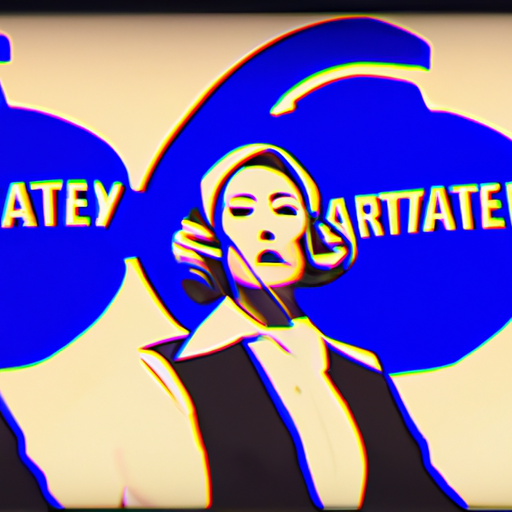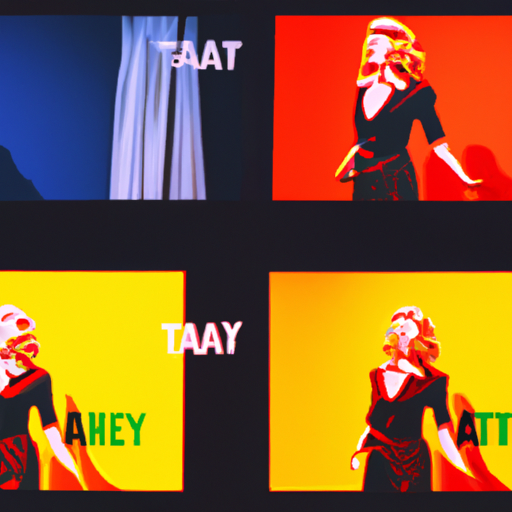
-
Table of Contents
Theatrical Elements in Graphic Design

Graphic design is a powerful medium that combines visual elements to communicate messages and evoke emotions. It is a form of art that has the ability to captivate and engage audiences. One way graphic designers achieve this is by incorporating theatrical elements into their designs. Theatrical elements, such as storytelling, composition, color, and typography, can enhance the impact and effectiveness of graphic design. In this article, we will explore the various ways in which theatrical elements are used in graphic design, and how they contribute to creating compelling and memorable designs.
1. Storytelling through Visual Narratives
Storytelling is a fundamental aspect of theater, and it is also a powerful tool in graphic design. By creating visual narratives, designers can tell stories and convey messages in a compelling and memorable way. Visual narratives can take various forms, such as sequential art, infographics, or even single images that evoke a sense of narrative.
For example, consider the graphic novel “Maus” by Art Spiegelman. Through a combination of illustrations and text, Spiegelman tells the story of his father’s experiences as a Holocaust survivor. The use of visual storytelling in this graphic novel not only enhances the emotional impact of the narrative but also allows the reader to engage with the story on a deeper level.
Similarly, graphic designers can use visual narratives to communicate complex ideas or concepts. Infographics, for instance, are a popular medium for presenting data and information in a visually appealing and easily understandable way. By using a combination of illustrations, icons, and text, designers can guide the viewer through a story, making it easier to grasp and remember the information being presented.
2. Composition and Visual Hierarchy
Composition is a crucial element in both theater and graphic design. In theater, the arrangement of actors, props, and set pieces on stage creates a visual hierarchy that guides the audience’s attention. Similarly, in graphic design, the arrangement of visual elements on a page or screen determines how the viewer perceives and interacts with the design.
Designers use various techniques to create a strong composition and establish a visual hierarchy. One common technique is the use of grids, which provide a framework for organizing content and creating balance. Grids help designers align elements, create consistent spacing, and establish a sense of order and structure.
Another technique is the use of contrast. By contrasting elements such as size, color, or shape, designers can create visual interest and guide the viewer’s attention. For example, a large headline in a bold color will naturally draw the viewer’s eye and establish hierarchy within the design.
Typography also plays a significant role in composition and visual hierarchy. Different fonts and typefaces have distinct personalities and can convey different emotions or messages. Designers carefully choose fonts that align with the overall tone and message of the design, ensuring that typography enhances the composition and guides the viewer’s attention.
3. Color Psychology and Emotional Impact
Color is a powerful tool in both theater and graphic design. In theater, lighting and color schemes are used to create mood, evoke emotions, and enhance the overall atmosphere of a production. Similarly, in graphic design, color choices can have a significant impact on how a design is perceived and experienced.
Color psychology is the study of how colors affect human behavior and emotions. Different colors have different associations and can evoke specific feelings or reactions. For example, warm colors like red and orange are often associated with energy, passion, and excitement, while cool colors like blue and green are associated with calmness and tranquility.
Graphic designers use color psychology to create designs that resonate with the intended audience. By carefully selecting colors that align with the desired emotional response, designers can enhance the impact and effectiveness of their designs. For example, a healthcare website might use calming blues and greens to create a sense of trust and relaxation, while a food delivery app might use vibrant reds and oranges to evoke a sense of excitement and appetite.
4. Typography as Character
In theater, actors bring characters to life through their performances. Similarly, in graphic design, typography can be seen as a character that conveys personality and emotion. Different typefaces have distinct characteristics and can evoke different moods or messages.
For example, a bold and condensed typeface might convey strength and power, while a handwritten script font might evoke a sense of elegance or informality. By carefully selecting and pairing typefaces, designers can create designs that have a unique personality and resonate with the intended audience.
Typography can also be used to create hierarchy and guide the viewer’s attention. By varying the size, weight, and style of type, designers can establish a visual hierarchy within a design. Headlines can be set in a bold and large font to draw attention, while body text can be set in a smaller and lighter font to provide supporting information.
Summary
Theatrical elements play a significant role in graphic design, enhancing the impact and effectiveness of designs. By incorporating storytelling, composition, color psychology, and typography, designers can create compelling and memorable designs that engage and captivate audiences.
Visual narratives allow designers to tell stories and convey messages in a compelling and memorable way. Composition and visual hierarchy guide the viewer’s attention and create a sense of order and structure. Color choices evoke emotions and create a specific mood within a design. Typography acts as a character, conveying personality and emotion, while also establishing hierarchy and guiding the viewer’s attention.
By understanding and utilizing these theatrical elements, graphic designers can create designs that not only communicate messages but also leave a lasting impression on the audience.
